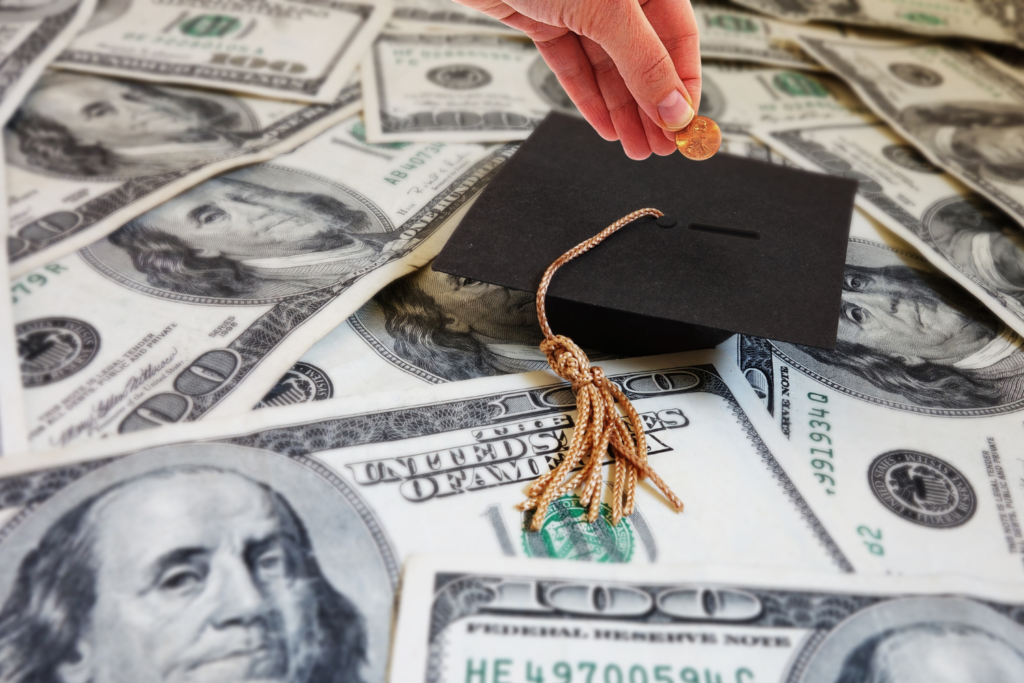Going to college is generally expensive and costs are rising every year. It is no wonder that many students take out student loans to help pay for their education. It seems like an investment at the time, but once you graduate and have to start making payments, it can become a burden. If you are struggling to make your student loan payments, you may be wondering if there are any options for student loan forgiveness.
In this post:
Is student loan forgiveness an option for you?
Thousands of people have student loans that they are struggling to pay back. Fortunately, there are options for student loan forgiveness. This guide will tell you everything you need to know about student loan forgiveness so that you can make the best decision for your future.
You may be able to get your loans forgiven completely or partially depending on your situation. It is important to explore all of your options and determine what would be the best course of action for you. Read this guide now to find out more about student loan forgiveness.
What are student loans and how do they work?
Before we get into the details of student loan forgiveness, it is important to understand how student loans work. Student loans are a type of financial aid that you can use to pay for your education. They are typically offered by the government or private lenders, such as banks or credit unions.
Student loans usually have to be repaid with interest. The interest rates can vary, but they are typically higher than the interest rates on other types of loans. This is because student loans are considered to be riskier loans.
Student loans can be used to pay for tuition, room and board, textbooks, transportation, and other school-related expenses. You may also be able to use them to cover the cost of living expenses, such as rent and food.
Types of Student Loan Forgiveness Programs
There are several different types of student loan forgiveness programs where you may have your federal student loans forgiven, canceled, or discharged in certain situations. Keep reading to see if you qualify due to your job or other circumstances.
Public Service Loan Forgiveness Program
If you are employed by a not-for-profit or government organization, you may be able to have your student loans forgiven under the Public Service Loan Forgiveness (PSLF) Program.
You must have made 120 qualifying monthly payments under a qualifying repayment plan while working full-time for a qualifying employer. Use the PSLF Help Tool to see if you qualify.
Teacher Loan Forgiveness
Another common type of student loan forgiveness program is the Teacher Loan Forgiveness Program. This program is available to full-time teachers who work in low-income schools or special education classrooms. If this describes you, you may be eligible for forgiveness of up to $17,5000 on your student loans.
Closed School Discharge
If the college that you are enrolled in closes while you are enrolled or soon after you withdraw, you may qualify for school loan forgiveness. This option is available for direct loans, Federal Family Education Loans (FFEL), and Perkins loans.
Disability Discharge
If you have been deemed totally and permanently disabled, you may be eligible for student loan forgiveness. This option is available for direct loans, FFEL program loans, and Perkins loans.
Total and Permanent Disability (TPD) Discharge Requirements
During your disability discharge application, you will need to have proof of your eligibility for discharge. There are three ways to prove this:
- If you are a veteran, you can submit documentation from the U.S. Department of Veterans Affairs (VA) showing that the VA has determined that you are 100% due to a service-connected disability or 100% unemployable;
- If you are receiving Social Security Disability Insurance (SSDI) or Supplemental Security Income (SSI) benefits, you can submit a Social Security Administration (SSA) notice of award for SSDI or SSI benefits stating that your next scheduled disability review will be within 5 to 7 years from the date of your most recent SSA disability determination; or
- You can submit certification from a Medical Doctor or Doctor of Osteopathy that you are totally and permanently disabled. Your Doctor must certify that you are unable to engage in any substantial gainful activity by reason of a medically determinable physical or mental impairment that: Can be expected to result in death; Has lasted for a continuous period of not less than 60 months, or Can be expected to last for a continuous period of not less than 60 months.
Death Discharge
If the death of the borrower or the student (if a PLUS loan was taken out) occurs, then federal student loans will be discharged. So if the parent took out a PLUS loan, and the parent dies, that loan will be discharged as well.
Documentation needed for student loan forgiveness can be an original death certificate or a certified copy of the death certificate. This will need to be submitted to the loan servicer. Funeral homes will supply these as needed usually at no extra cost.
Bankruptcy Discharge
In rare cases, you may be able to have your student loans forgiven after declaring bankruptcy. You will need to file a separate action that is known as an “adversary proceeding” that requests that the bankruptcy court finds that repayment of your student loans would impose an undue hardship on you and your dependents.
Requirements for Student Loan Forgiveness Programs
Each loan forgiveness program has different requirements that you must meet in order to be eligible. Here are some of the common items that may be requested:
- Proof of income
- Loan statements
- Employment verification letters
You can find more detailed information on each application including the requirements needed on the website of the Office of Federal Student Aid.
Application for student loan forgiveness
The application process for student loan forgiveness can be a little confusing. Here are the steps you need to take:
- Check to see if you are eligible for a student loan forgiveness program.
- Gather the required documents, including proof of income and employment verification letters.
- Complete the application form and submit it to the appropriate agency.
It is important to note that you should only apply for one student loan forgiveness program at a time. Applying for multiple programs can slow down the application process and may result in you being denied for all of them.
Pros and Cons of Student Loan Forgiveness Programs
Are you now considering applying for a student loan forgiveness program? Here are some pros and cons of Student Loan Forgiveness Programs to help you make up your mind if you want to go through the hassle or not:
PROS:
- You may be able to get your loans forgiven completely or partially.
- Forgiveness can help you get out of debt sooner.
- It can free up money that you would otherwise have to use to make monthly loan payments.
CONS:
- The application process can be confusing and time-consuming.
- You may have to wait a long time before you are approved for loan forgiveness.
- You may be denied student loan forgiveness if you do not meet the eligibility requirements.
How to reduce your student loan payments?
If you are not eligible for a student loan forgiveness program, or if you do not want to apply, there are other ways to reduce your student loan payments. Here are some tips:
Consolidate your loans
This will allow you to combine multiple student loans into one loan with a lower interest rate.
Refinance your loans
You can refinance your student loans to get a lower interest rate. This may increase your monthly payment, but it will save you money in the long run. Click here to compare student loan refinancing rates from several lenders. It’s free to compare and doesn’t affect your credit score.
Make extra money
Working a part-time job, a side hustle, or even work study can help you to reduce your monthly student loan payments in the long run.
Use a budget planner
A budget planner can help you to track your expenses and find ways to save money.
Apply for scholarships and grants
Scholarships and grants can help you to pay for school without taking out loans.
As you can see, there are a few different options available to you if you want to reduce your student loan payments.
Final Thoughts
Although student loans can be a burden, they are also an investment in our future. We should not shy away from them, but rather embrace the opportunity they provide. With responsible borrowing and repayment habits, we can make sure that our student loans help us achieve our goals instead of holding us back. We hope this article has helped you to understand the ins and outs of student loan forgiveness programs and how they can help you.






